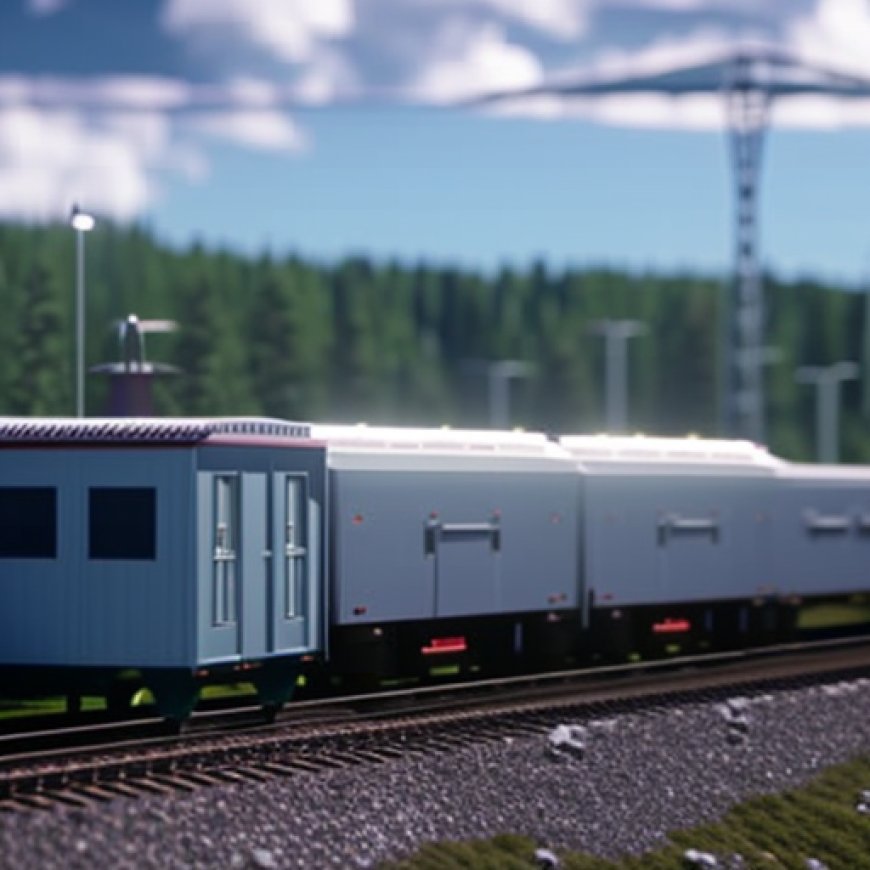New Alaska utility energy storage system to support Railbelt transmission


Chugach Electric Association and Matanuska Electric Association Unveil New Battery Energy Storage System
ANCHORAGE, Alaska (KTUU) – Chugach Electric Association and Matanuska Electric Association officials celebrated the unveiling of a new Battery Energy Storage System (BESS) Monday in an effort to improve energy storage for Southcentral Alaska and help prevent mass electrical outages in the future.
The battery is a Tesla megapack 2XL lithium iron-phosphate (LPF) battery, with a 40-megawatt, two-hour storage system, to help keep the Railbelt utilities running.
Chugach Electric said Monday that the system will be used as a backup during power issues, such as transmission line interruptions, generation issues, or other load shed events. It can also respond to power disruptions, injecting or absorbing power as needed to stabilize the grid.
Improved Energy Storage for Southcentral Alaska

(Rachel McPherron/Alaska’s News Source)
Chugach Electric Chief Operating Officer Andrew Laughlin said the addition takes the companies’ efficiencies to “a whole other level.”
“[I]n these situations where we have generators trip, and for example, if we have a load shed event,” he explained, “this will help us avoid that in the future, because these batteries will both be able to deliver power, and something that a traditional turbine generator can’t do is it’ll also be able to absorb power.”
The battery was installed just south of the Chugach headquarters building in Anchorage and is expected to lower Chugach and MEA’s natural gas consumption by about 5% annually, according to officials.
Sustainable Development Goals
- Goal 7: Affordable and Clean Energy
- Goal 9: Industry, Innovation, and Infrastructure
- Goal 11: Sustainable Cities and Communities
- Goal 13: Climate Action
Copyright 2024 KTUU. All rights reserved.
SDGs, Targets, and Indicators
-
SDG 7: Affordable and Clean Energy
- Target 7.1: Ensure universal access to affordable, reliable, and modern energy services
- Target 7.2: Increase substantially the share of renewable energy in the global energy mix
- Indicator 7.2.1: Renewable energy share in the total final energy consumption
-
SDG 9: Industry, Innovation, and Infrastructure
- Target 9.1: Develop quality, reliable, sustainable, and resilient infrastructure
- Target 9.4: Upgrade infrastructure and retrofit industries to make them sustainable
- Indicator 9.4.1: CO2 emission per unit of value added
-
SDG 11: Sustainable Cities and Communities
- Target 11.6: Reduce the adverse per capita environmental impact of cities
- Indicator 11.6.1: Proportion of urban solid waste regularly collected and managed in controlled facilities
Analysis
The article discusses the installation of a new Battery Energy Storage System (BESS) in Southcentral Alaska to improve energy storage and prevent mass electrical outages. Based on the content of the article, the following SDGs, targets, and indicators can be identified:
1. SDG 7: Affordable and Clean Energy
The installation of the BESS aligns with SDG 7, which aims to ensure affordable and clean energy for all. The BESS helps improve energy storage and stability, reducing the risk of power disruptions and outages.
2. SDG 9: Industry, Innovation, and Infrastructure
The installation of the BESS also relates to SDG 9, which focuses on developing sustainable and resilient infrastructure. The BESS is a technological innovation that enhances energy storage capabilities and contributes to a more reliable and efficient energy infrastructure.
3. SDG 11: Sustainable Cities and Communities
The BESS installation contributes to SDG 11, which aims to reduce the adverse environmental impact of cities. By improving energy storage and stability, the BESS helps reduce the risk of power disruptions and their associated environmental consequences.
Table: SDGs, Targets, and Indicators
| SDGs | Targets | Indicators |
|---|---|---|
| SDG 7: Affordable and Clean Energy | Target 7.1: Ensure universal access to affordable, reliable, and modern energy services | Indicator 7.2.1: Renewable energy share in the total final energy consumption |
| SDG 9: Industry, Innovation, and Infrastructure | Target 9.1: Develop quality, reliable, sustainable, and resilient infrastructure | Indicator 9.4.1: CO2 emission per unit of value added |
| SDG 11: Sustainable Cities and Communities | Target 11.6: Reduce the adverse per capita environmental impact of cities | Indicator 11.6.1: Proportion of urban solid waste regularly collected and managed in controlled facilities |
Source: alaskasnewssource.com








